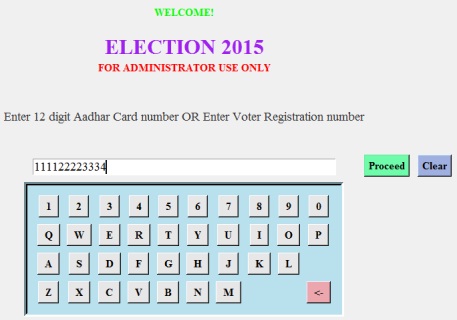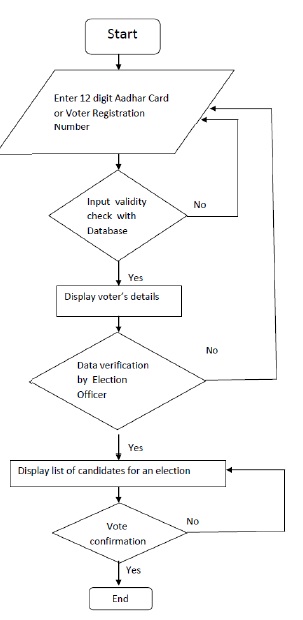





Published on Mar 01, 2025
India is the world‟s largest democratic country. Fundamental right to vote forms the basis of Indian democracy. In India all earlier elections, be it state elections or central elections a voter used to cast his/her vote to his/her favourite candidate by putting the stamp against his/her name. Then folding the ballot paper as per prescribed method before putting it in the ballot box.
This is a long, time-consuming process and prone to errors. Over the years, there was a pronounced increase in the volume of work: millions of ballot papers had to be printed and lakh of ballot boxes had to be manufactured, transported, and kept in storage; and a great amount of time was taken up by the conduct of elections.
To overcome these difficulties, the Election Commission of India (ECI) thought of electronic gadgets. The Electronics Corporation of India Limited (ECIL), Hyderabad, and Bharat Electronics Limited (BEL), Bangalore, developed the electronic voting machine in 1981. The proposed Electronic Voting Machine is based on Raspberry Pi model 2B which will be convenient for every citizen at the polling booth. Unique Identification Number (UID)/Aadhar Card will be used for identification of a voter.
The Raspberry Pi is a low cost, credit-card sized computer manufactured and designed in the United Kingdom by the Raspberry Pi foundation that plugs into a computer monitor or TV, and uses a standard keyboard and mouse.
1. A 900MHz quad-core AM Cortex-A7 CPU.
2. 1GB RAM.
3. 4 USB ports.
4. 40 GPIO pins.
5. Full HDMI port.
6. Ethernet port.
7. Combined 3.5mm audio jack and composite video
8. Camera interface (CSI).
9. Display interface (DSI).
10. Micro SD card slot.
11. Video Core IV 3D graphics core.
As it has an ARMv7 processor, it can run the full range of ARM GNU/Linux distributions, including Snappy Ubuntu Core, as well as Microsoft Windows 10. Supporting computer operating systems like Linux and providing simple input/output lines i.e. the GPIO makes it perfect for controlling almost anything. It can be said that Raspberry Pi can be effectively used considering compatibility, hardware fabrication costs, time bounds and required features in the project.
Python provides lots of options for developing graphical user interfaces (GUIs). Tkinter is the standard GUI library for Python. Python when combined with Tkinter provides an easy way to create GUI applications. Tkinter provides a powerful object-oriented interface to the Tk GUI toolkit. Creating a GUI application using Tkinter is an easy task. All you need to do is perform the following steps −
To Import the Tkinter module.
Creation of GUI application main window.
Adding one or more widgets to the GUI application.
Entering the main event loop to take action against each event triggered by the user.
Tkinter provides various controls, such as buttons, labels and text boxes used in a GUI application. These controls are commonly called widgets.
1. An administrator will feed inputs; Voter registration number or Aadhar Card number. On pressing „Proceed‟ button, respective voter details will be displayed on the next window using MySQL database.
2. Administrator will verify whether the data displayed on the window is exactly the same as that on the Aadhar Card/Voter Card. The voter will be allowed to proceed to the next window only after this verification.
3. A list of candidates along with their respe ctive party symbol will be displayed on the window. A confirmation subwindow will be displayed on pressing VOTE button.


A central server(Admin Panel) will communicate with Raspberry based Electronic Voting Machine.
An administrator will login to get access to this Admin Panel. Admin user, voters, candidate, EVM Machine shortcuts are displayed on the Dashboard. The „User Management‟ links to Add an Admin User and display list of all administrators a particular election. The „Voter Management‟ links to Add a voter option which includes „Voter Identity Form‟. The Voter Identity Form contains fields such Voter Card no., Aadhar Card no., Voter‟s Full Name, Father's/Husband's Name, Date of Birth, Age, Gender, Permanent Address, Mobile Number, State, City, Constituency, Profile pic and Physically handicapped. Also, a „voter list‟ link provides „edit‟ and „delete‟ options. The „Voter Identity Form‟ and „Candidate Profile form‟ have similar fields. A „Save/Submit‟ stores the information into MySQL database.
There is an option to select the type of election. A physically handicapped voter can then enter his/her Aadhar Card Number or Voter Registration number and proceed further. The next window displays voters details like Full Name, Father/Husband Name, voter registration number, Gender, Date of Birth, Age, Address and option to select the constituency. The data is fetched through web services from MYSQL database.The voter can now vote to a candidate belonging to his/her constituency by pressing vote button below candidate‟s name. On pressing vote button, an acknowledgement window is displayed which says „You have voted successfully Thank you!‟ The android mobile application is synchronized with a Admin Panel. The votes are calculated in the Admin Panel.
The Electronic Voting Machine works precisely but the report analysis modifications are still to be improved. This software is tested properly and all necessary conditions that need to be taken care during vote process are considered. Aadhar card recognition facility for EVM will serve as future scope of this project.
[1] Md. Maminul Islam, Md. Sharif Uddin Azad, Md. Asfaqul Alam, Nazmul Hassan “Raspberry Pi and image processing based Electronic Voting Machine (EVM)”,International Journal of Scientific & Engineering Research, Volume 5, Issue 1, January-2014
[2] Hari K. Prasad J. Alex Halderman Rop Gonggrijp “Security Analysis of India‟s Electronic Voting Machines”, Proc.17th ACM Conference on Computer and Communications Security (CCS‟10), Oct.2010
[3] Tabia Hossain, Syed Syed Shihab Uddin, Iqbalur Rahman Rokon, K.M.A Salam, M. Abdul Awa “Proficient FPGA Execution of Secured and Apparent Electronic Voting Machine using Verilog HDL”, International Journal of Environment pp 18-24, 2014.
[4] Timardeepkaurarneja, Jasleenkaurbassi, Damanjeetkaur “Implementation of Electronic Voting Machine through FPGA”, International Journal of Soft Computing and Artificial Intelligence Volume-2, Issue-1, May-2014